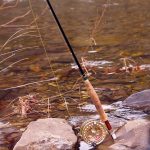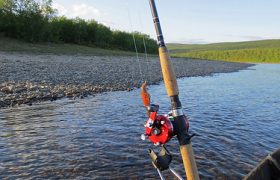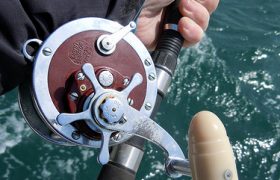A little knot-tying knowledge will go a long way. Tying good knots ensures your hook remains on the line and can help you swap equipment more easily. With practice, you will be able to tie knots easily and change your gear quickly.
Make time to check your fishing line on a regular basis to make sure that it has not frayed, knotted or kinked. If it is then cut away the offending piece and then re-knot it onto the lure. You do not want to be reeling in a fish only to have the line snap.
Don’t just tie your hook to your line haphazardly; utilize the improved clinch knot. To tie this knot, first put the tip of the line through the hook, and wrap five times around itself before passing the tip through the first coil and the eye of the hook. Finish the knot by pulling the end through the loop as tightly as you can.
Make sure your line is wet before tying a knot. This will make the knot much stronger, as well as reducing the friction when tying a knot. When choosing a knot, try using a double fisherman’s knot or a clinch knot.
A great fishing tip would be to learn the improved clinch knot for tying your lures or bait to your line. This knot is simply and is the best way to insure that your bait will not be lost to a snag or while fighting a fish. Like all knots, make sure you practice, practice, practice.
Whether you are trying to tie a hook or some kind of swivel to the line, be sure to use a slip-proof fisherman’s knot. Start by tying the hook directly to your line or tying it on a swivel. Then, snap on a type of snelled hook. You can then attach a bobble further up your line.
You should now feel motivated when thinking about fishing. In fact, you should be motivated enough to not just think you want to do it, but to actually go out and get started. Go ahead and indulge in this relaxing yet, fun activity. If anything, you can catch a meal or two for you and your family or friends to enjoy.
Photo by Project Healing Waters Fly Fishing – Northern VA 







